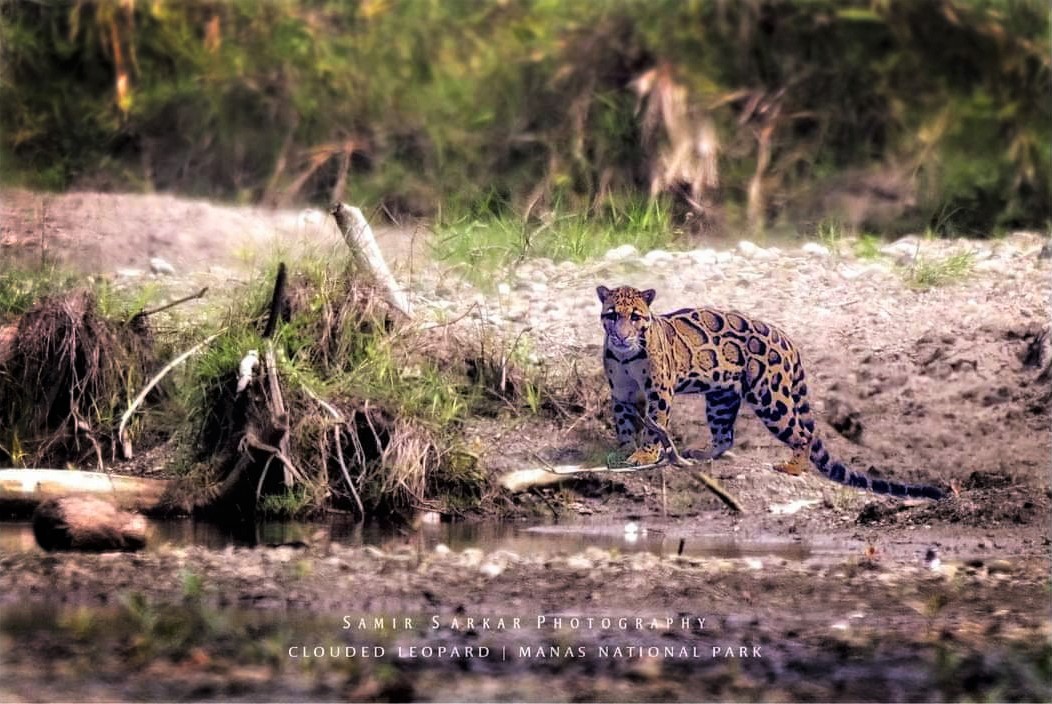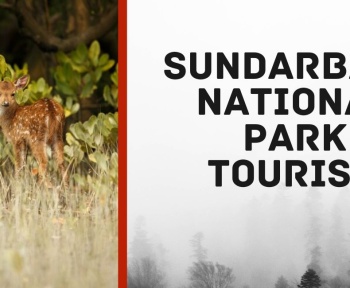Manas sanctuary, situated on the foothills of the exotic Himalayas, where the wooden hills give passage to the tropical forests and alluvial grasslands. It is home to vast biodiversity of wildlife with many endangered and rarely found species like Indian Rhinoceros, Indian elephants, Gaur, Water buffalos, Hispid hare, Bengal florican, etc. Manas Tiger reserve considers as best wildlife safaris in India.
Apart from this, it is also home to several carnivorous animals, including the Bengal Tiger (Panthera Tigris), Leopard, Black Panther (Panthera Pardus) & Clouded Leopard (Neofelis nebulosa).
The carnivores in the sanctuary prefer different habitats like the tiger prefer undisturbed habitats, and they feed on the large prey. On the other hand, the common Leopard prefers a broader range of ecosystems as a habitat as its prey is on various species. The Clouded leopards prefer densely vegetated habitats and remote areas and prefer small prey.
As the name suggests, the clouded Leopard are famous for their distinctive cloud resembling spotted coats. This coat assists them to get camouflaged in the lush tropical bushes. The Clouded leopard habitat consists of the alluvial slope in the foothills of the Himalayas with dense tropical forests.
The IUCN has mentioned the clouded leopards in the Red list because of habitat loss and poaching. They are mostly hunted for their precious claws, teeth, and skin. Their skin is used in Asian medicines and also used as an exotic decoration piece by some.
There has been a decrease in the population of leopards. The exact is still not there, but the estimated number is around 10,000 in the wild. The number of Clouded Leopard is decreasing rapidly, and it is believed that 10% of this cat species are vanishing every year since 1987. Officially count of their population was made in the year 1821, and over 200 years their origins seem to be mysterious.
These cats are divided mainly into two species: Mainland Clouded Leopard whose scientific name is Neofelis nebulosa and Sunda Clouded Leopard whose scientific name is Neofelis diardi. The Sunda Clouded Leopard has smaller and darker cloud markings in comparison to the Mainland Clouded Leopard.
The clouded Leopard has enormous features to attract. As the name suggests, these cats got their name from the cloud-like pattern on their body. The Clouded leopard size is 4-6 feet tall and this includes their long tail also and stands around 15-16 inches tall. They also have prominent black spots on their heads and body.
Places To Spot Clouded Leopards –
Similarly, as the behavior, the Clouded leopard habitat is also mysterious. These cats travel through the hard terrain as well as the rain forest and consequently, they seem to be having the adaptability to any climate.
However, they are found in diverse regions of Asia like the rainforests of Indonesia, Nepal, and some parts of Borneo, China, Thailand, and Bhutan.
In India, they are found in some national parks like Namdapha National park in Arunachal Pradesh, Clouded Leopard National Park in Tripura, Dibru Saikhowa National Park in Assam, Buxa Tiger Reserve in West Bengal, Phawngpui National Park in Mizoram, Balphakram National park in Meghalaya, Sipahijola Wildlife Sanctuary in Tripura, Khangchendzonga National Park in Sikkim, Singalila National Park in Darjeeling and Manas National Park in Assam which is popular for best wildlife safari India.
Clouded Leopards Diet –
The Clouded leopard diet comprises wild animals like wild pigs, monkeys, deer, squirrels, and even birds. Cats wait for their prey to come in close proximity to them and then they attack them instead of directly attacking their prey. After they completing eating their prey, they return back to the tree to take some rest and also to digest their food.
More Information about Clouded Leopard –
Their behavior is mysterious, they are solitary animals, and the cats are very secretive and prefer to live alone in the dense tropical forest.
The clouded leopards are mainly solitary animals apart from their breeding period or weaning period of the cubs.
They rest on the branches of the tree during the day and come down during the night as these cats are nocturnal animals.
The clouded leopard consists of rotating rear ankle joints and shots legs that enable them to climb down the tree in a similar manner as the squirrel by keeping their head first.
And while resting on the tree branches they do not fall as their long tails enable them to have maintained excellent balance. Among all the species of cats, the clouded leopards have the longest tail measuring 65 cm. This helps them to climb up and down from the trees easily.
The Clouded leopard teeth and jaws are similar to the extinct animal sabre toothed cat. In proportion to their body size, they have the largest upper canine tooth. And also their jaws have a wide gap of nearly 100 degrees.
Clouded leopards have a life span of 13-14 years, weighing up to 50 pounds, having the biggest canine teeth among the medium and small wild cats, which can measure up to 4cm with strong jaw muscles. These cats have the biggest teeth among the medium and the big cats.
Clouded leopards are a member of the Felidae family and come under Nebulosa species. They are included in the endangered species around the world because they face the threat of extinction. Clouded Leopard is shy in nature and elusive wild cat and can be spotted in the Tropical dense rainforest.
Mating Period of Clouded Leopards –
There is no specific period of the Clouded leopards, but in human care, female leopards give birth to the cubs around December and March.
For the clouded leopards in captivity, the mating between the female clouded leopard and the male clouded leopard is a challenging task. This is primarily due to cases of aggression between the male and female Clouded leopard and these results in the death of these cats.
However, numerous conservationists tried to pair the female and male clouded leopard during their young age and this has given excellent results.
These species of cat reach their sexual maturity at two years of age. And their gestation period is between 85 to 93 days.
The baby Clouded leopards are born blind and remain for ten days. Mother leopard takes full care of the cubs for almost 10 months, and then they are independent. The whole responsibility of raising the cubs is borne by the female Clouded leopards.
Clouded Leopard Population Size –
The Clouded leopard population has significantly decreased due to deforestation illegal poaching and reduced rainfall. Poachers and hunters hunt them for claws, paws, and furs.
Clouded Leopards are one of the best climbers in the cat family, and they’re mostly seen on trees rather than on the ground, a strong grip of their paws and claws helping them climb and stay on the trees.
Very little information is available about the population size of the clouded leopards, and they are considered as vulnerable species.
Why Choose Manas National Park Wildlife Photography tour –
Manas sanctuary homes the rare Clouded leopards with the habitat and the conditions favoring the cats along with 22 other species of endangered animals.
Wildlife photography is a keen interest in the sanctuary with high biodiversity in wildlife. Manas National park attracts a huge amount of tourists and wildlife photographers. The foothills of the icy Himalayas add more beauty to the dazzling sanctuary. The enthusiast environmentalist and wildlife photographers can get excellent opportunities to spot the most endangered species including the clouded leopards. The best time to spot them is during the dry season but one should expect high humidity during this time. If you interested in Clouded Leopard & explore the virgin wild forest of India then Manas Tiger reserve Wildlife photography tour is the best choice.
To explore the beauty of huge biodiversity in India, one can visit the national parks and the wildlife sanctuaries. The wildlife safaris in India give the opportunity for Wildlife enthusiastic.
The best way to save this wild & wildlife is through wildlife photography. The art of photography is one of the most effective weapons available to those people who want to desire to protect the wildlife spaces and species. The primary fact behind this is that camera in the hands of an environmentalist or wildlife photographer would deliver a powerful image to the nation which provides sufficient force to raise awareness among the people to save the forests and their species.



